Layering: How to Dress a Dog for Varying Weather Conditions
If you are taking your dog outdoors in varying weather conditions, a key to keeping them safe is with a jacket layering system.
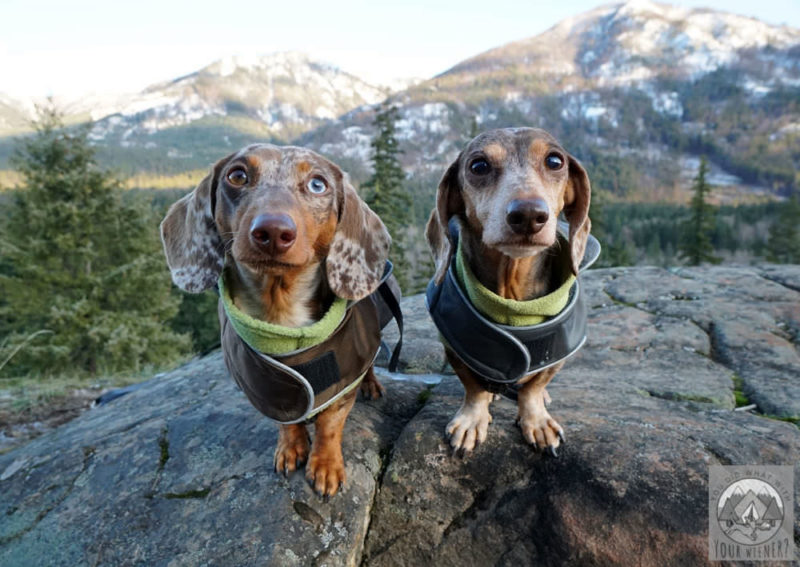
I don’t know about where you live, but in Washington State, we pretty much have to be ready for any weather condition at any time.
As they say around here (I’ve actually heard people from all over the world say it about where they live), “If you don’t like the weather, wait 5 minutes and it will change.”
Add to that, we often travel from one region of the state to another where the daily weather conditions are different.
That means that we could leave our house where it is the 50’s, but we could drive somewhere where it’s 35 degrees and raining.
Or it could be 40 and cloudy at our house and a balmy 60 and sunny by the time we get to our destination.
Or I look at the thermometer before I leave the house and it says 15 degrees but, once we’re hiking in the sun, it feels more like 40.
You get the point.
Weather can be really unpredictable, especially true in the “in between” seasons of fall and early spring, but having different jacket layers available can help keep your dog protected and comfortable year-round.
Why Layering is Important for Your Dog
In the winter, most people are aware of the risk of hypothermia for their dog.
Hypothermia occurs when an animal’s body gets so cold that the heart and circulation is affected to the point a dog can no longer maintain their body temperature.
It’s a very serious condition that can lead to trouble breathing and irregular heartbeat. It’s even possible for a dog to slip into a coma from it.
It’s even more important to protect your small dog from winter weather because they can’t generate as much body heat on their own.
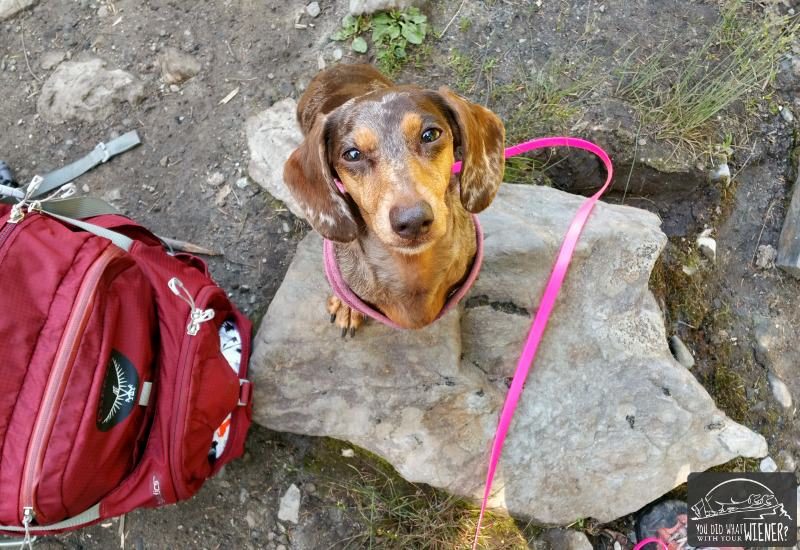
Not everyone understands that it’s also possible for a dog to overheat and become dehydrated even when it’s cold out though.
When a dog is too hot, they perspire more, which results in lost body moisture.
Dehydration can lead to rapid heart rate, a weak pulse, vomiting, and even collapse. It can be life threatening.
Note: contrary to popular belief, not all dogs that are dehydrated feel thirsty and drink.
Also, excess perspiration can mean moisture and wet clothes can mean hypothermia. So it’s a viscous cycle.
When you have a good jacket layering system for your dog, it can help protect them from weather and activity related medical issues.
When I bring different layers for Summit and Gretel, it allows me to pile on extra warmth if I need to or peel off a layer so they don’t get too hot.
The Principles of Layering Your Dog Clothes
Think of a jacket layering system for your dog similar to layering clothing for people.
This layering system typically consists of a:
Base layer:
This can serve as a light layer of warmth on its own or can be combined with multiple layers to provide some extra oomph.
Some fabrics also wick sweat away from your dog’s body.
Middle layer:
This layer, when placed over the base layer, helps to retain a dog’s body heat.
If a dog needs a little more warmth than the base layer provides, but two layers would be too much, you can use the middle layer on its own.
Outer layer:
This is an outside layer that provides protection from wind and rain.
Sometimes it’s a third layer you add over the top of your dog’s jackets and sometimes it’s integrated with the middle layer as an outer protective fabric.
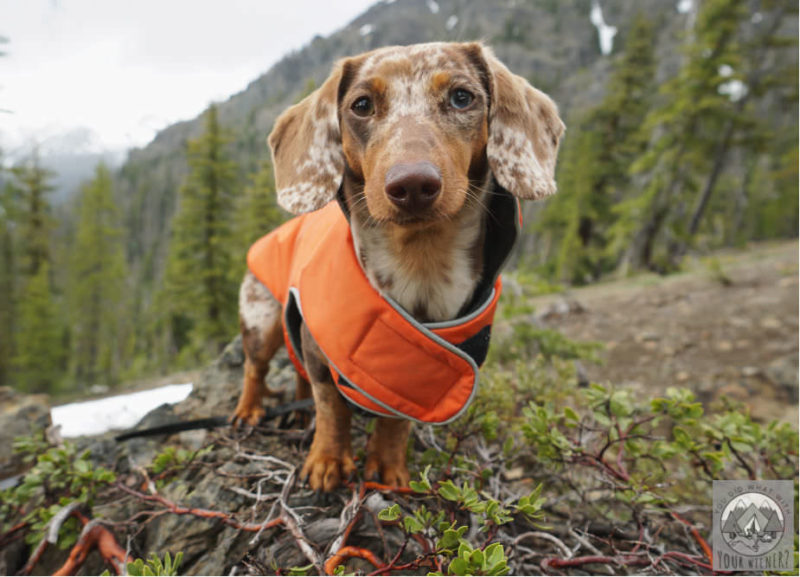
The fabric of an outer layer is typically some kind of waterproof membrane that doesn’t breathe quite as well as fabrics without the membrane.
This can be an advantage when extra warmth is needed but, when the weather is warmer, this “outer layer” can be worn over the lighter base layer or on it’s own (think rain jacket in spring).
Utilizing all layers isn’t always necessary but, together, having each layer available can keep you prepared for almost any condition.
Check out this article to see all of the different dog jackets I use for my Dachshunds.
Layering in Practice (Our Example)
Disclosure: We’ve been using Teckelklub jackets for many years. I bought some of our jackets and they generously sent us others to try. All opinions are truthful and my own.
If I’m going prepared for any condition, this is an example of a layering system I use for Summit and Gretel.
Thin base layer – a thin, fleece jacket like the Teckelklub Fuzzie or the Voyager K9 Apparel Tummy Warmer.
Middle layer – Teckelklub Cascadia Puffa Vest (true middle layer), Teckelklub Trench, or Voyager K9 Apparel Winter Coat (both are a middle layer with a waterproof outer layer).
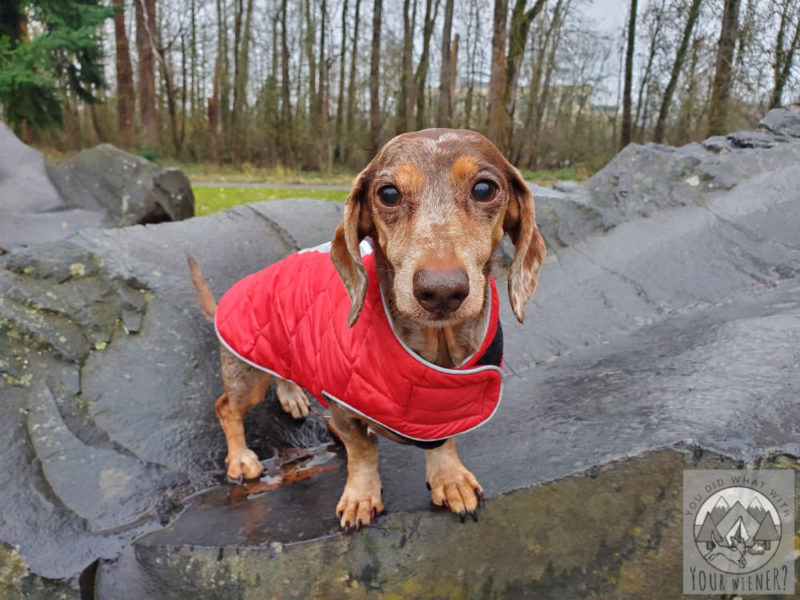
Outer layer – Teckelklub Slicker Waterproof Dog Coat or the Voyager k9 Apparel Rain Coat.
Note: The Voyagers Rain Coat fits pretty close to the body so I suggest sizing up if you plan to put layers on your dog underneath it.
If it’s just a little chilly, I use the “base layer” to add just a bit of extra warmth.
If it’s just a bit chilly and raining, I may take off the base layer and put on only the middle layer.
I would also do this if it’s windy as the outer fabric on the fleece only minimally increases the warmth factor but is wind proof so it’s cuts heat loss that way.
If it’s dry but colder, I would use the Cascadia vest mid layer with a Fuzzie layered underneath.
If a bit colder but wet, I may use the middle layer with a waterproof shell (outer layer) over it.
For really cold conditions, I may layer all 3 together.
I’ll be honest though, I rarely need to go to that extreme and the more I pile on the less likely Summit is to tolerate it (she’ll “freeze” – I’m still teaching her to wear different jackets – Gretel is good with about anything I put on her).
Note: I need two sizes in some of these jackets – one size for when they are worn alone and the next size up if I intend to use them for layering.
For example, Gretel wears a size 2 Trench if she’s wearing that alone over a base layer. If I want to put the middle layer in between, she would need a size 3 to accommodate the extra girth around the neck and chest.
Final Thoughts
As is often said in Scandinavian countries, “there is no such thing as bad weather, just bad clothing.”
The key to keeping your dog comfortable and happy in varying weather conditions is to bring several different dog jackets that you can layer together if needed.
If it’s cold, you put more layers on your dog. If it get’s warmer, you can remove one or all layers to adjust to this temperature change.
With some preparation, your dog can safely adventure in any weather condition.
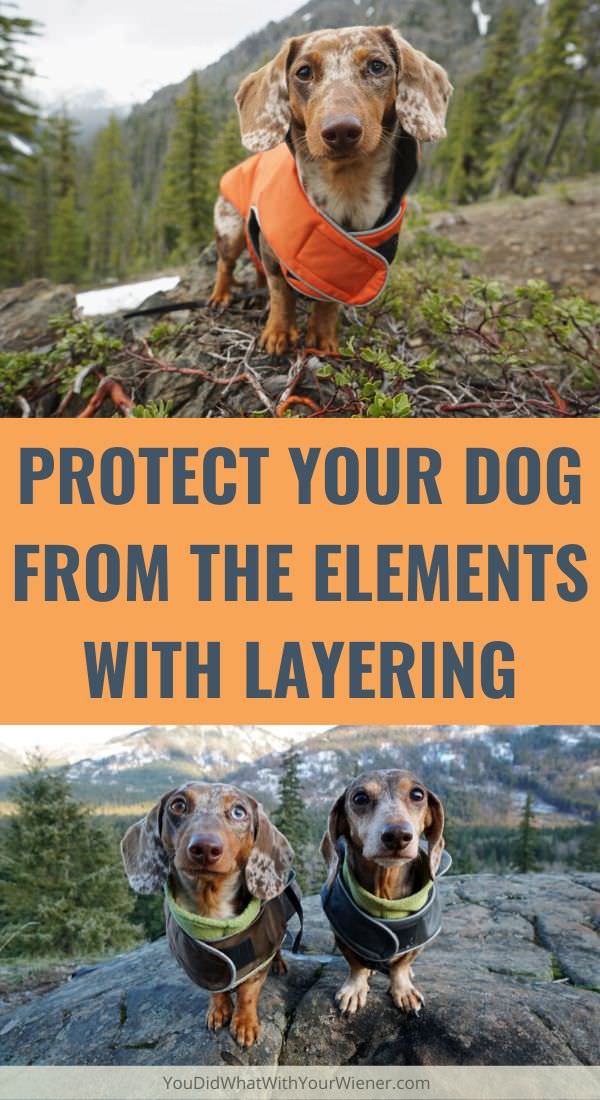

About the Author
Hi, I’m Jessica. I’ve been studying the Dachshund breed since 2007, owned 3 of my own, and shared in the lives of thousands of others through their owner’s stories. When I’m not sharing what I know on this blog, you can find me hiking, camping, and traveling with my adventurous wiener dogs.
